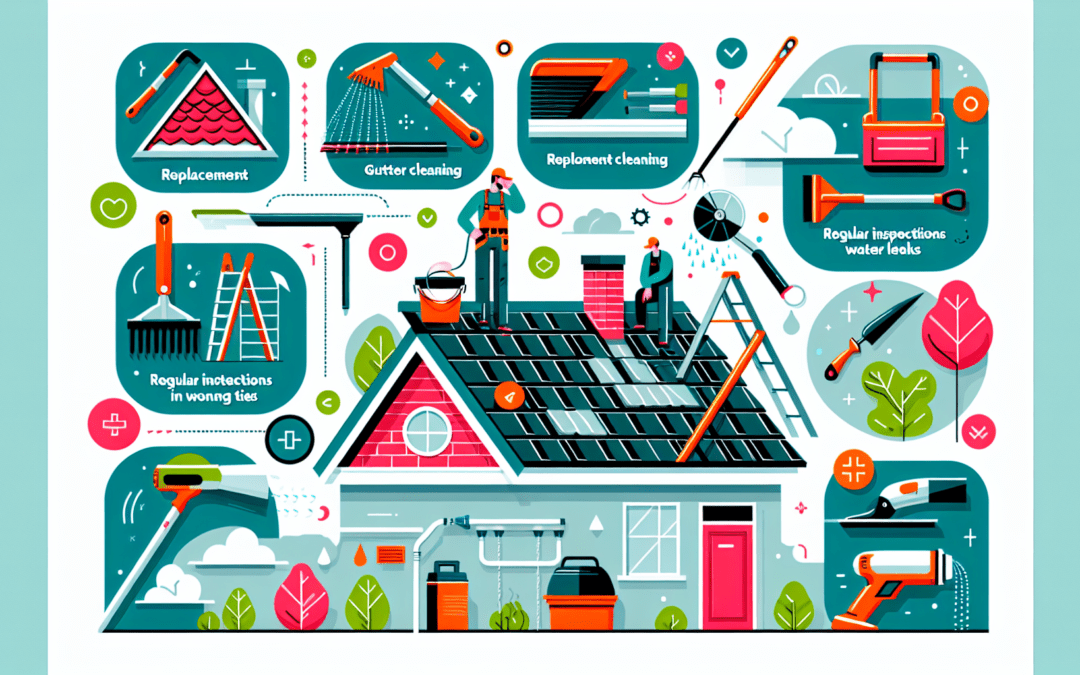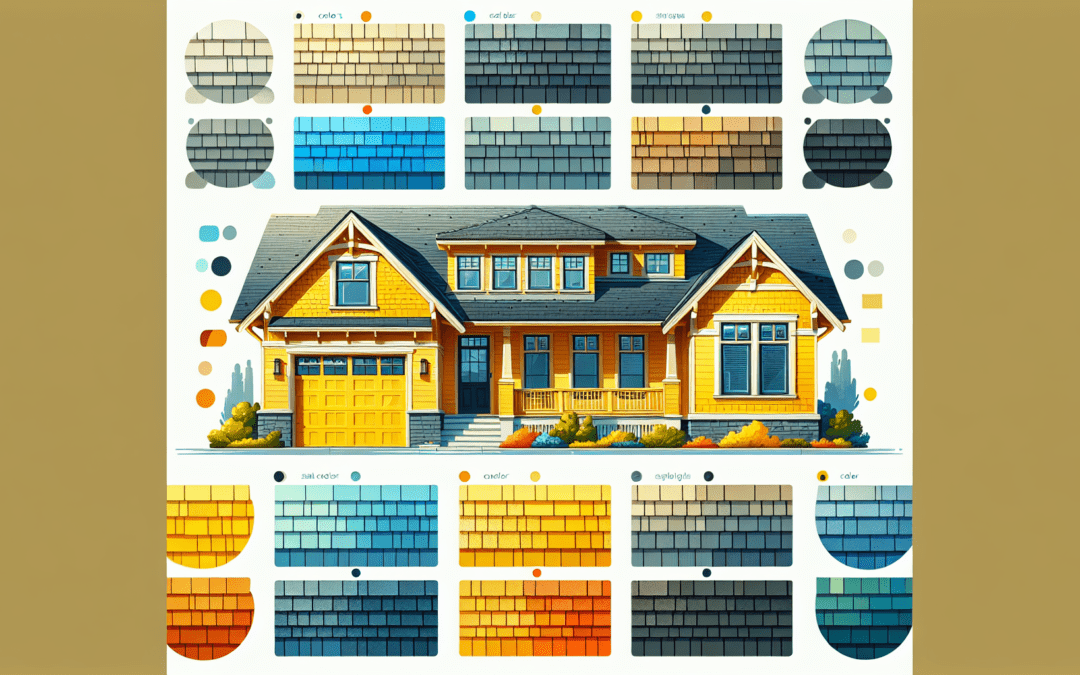
Nov 16, 2023 | Construction, Maintenance, Sustainability
The Basics of Construction Services
At its core, construction services encompass a broad range of tasks and responsibilities necessary to plan, build, and maintain a physical structure. These services can range from residential building processes to massive industrial projects, each requiring a unique set of skills, methodologies, and materials. The foundation of construction services revolves around three major phases: pre-construction planning, construction execution, and post-construction maintenance. Successful projects demand meticulous planning, efficient execution, and ongoing maintenance to ensure longevity and functionality of the structures.
Pre-construction Planning
Pre-construction is the phase where ideas take shape. This step involves feasibility studies, site investigation, environmental assessments, budgeting, and securing the necessary permits and approvals. Effective pre-construction planning can significantly reduce risks, save costs, and ensure that the project’s timeline is realistically set.
Construction Execution
This phase is where plans are turned into reality. Construction execution requires a coordinated effort among various professionals including architects, engineers, construction managers, and skilled tradespeople. Activities during this phase include site preparation, foundation work, structural framing, installation of electrical and plumbing systems, and interior and exterior finishes.
Post-Construction Maintenance
The third phase ensures that the newly built structure remains safe, functional, and aesthetically pleasing. Post-construction services might include regular inspections, repairs, and updates to the building to comply with codes and regulations. This phase is essential for prolonging the life of the building and maximizing its value for users and owners alike.
Current Trends in Construction Services
The construction industry is undergoing significant transformations due to advancements in technology, shifts in societal needs, and an increased focus on sustainability. These changes have sparked new trends that are shaping the future of construction services.
Green Building and Sustainability
Environmental considerations have become a priority in the construction sector. Green building practices aim to minimize the environmental impact of buildings by efficiently using energy, water, and other resources. Sustainable construction also involves selecting eco-friendly materials and designing for reduced waste. Green certifications, such as LEED (Leadership in Energy and Environmental Design), are increasingly sought after, signaling a building’s environmental performance to stakeholders.
Technological Integration
The integration of technology into construction processes is revolutionizing how projects are planned, executed, and managed. Tools such as Building Information Modeling (BIM) allow for the creation of detailed digital representations of buildings, facilitating better planning and collaboration among stakeholders. The use of drones and robotics for site surveying and materials handling is improving safety and efficiency on construction sites. Moreover, wearable technology and augmented reality (AR) are enhancing the capabilities of workers on the ground.
Modular and Prefabricated Construction
Modular and prefabricated construction methods are gaining popularity due to their potential for reducing construction time and waste. This approach involves manufacturing parts of a building in a factory setting and then transporting them to the construction site for assembly. These techniques not only accelerate the construction process but also contribute to better quality control and reduced environmental impact.
As the construction industry continues to evolve, staying informed about these fundamentals and trends is crucial for industry professionals and stakeholders looking to navigate the complexities of modern construction projects. The future promises continued innovation and adaptation, leading to more efficient, sustainable, and technologically advanced construction services.

Nov 9, 2023 | Materials, Roofing
Understanding Bubbles in EPDM Roofs
Have you ever seen little bubbles or blisters popping up on a roof? This can happen on many types of roofs, but it’s something people often notice on EPDM roofs. EPDM stands for Ethylene Propylene Diene Monomer, a type of rubber used in many flat roofs because it’s waterproof and lasts a long time. But sometimes, bubbles can form on these roofs. Let’s dive into why this happens and what we can do about it.
Why Do Bubbles Form?
Bubbles on an EPDM roof can be caused by a few different things. One common reason is trapped air. When the roof was being put on, if air got trapped under the rubber, it could form a bubble later on. Another reason could be moisture getting trapped. If there’s water underneath the rubber when it’s being installed, this moisture can turn into steam when it gets hot out, creating a bubble. Sometimes, the adhesive (the glue that sticks the EPDM to the roof) wasn’t applied properly, and that can lead to bubbles too.
Why Should We Care About Bubbles?
Bubbles might seem like a small problem, but they can lead to bigger issues if not taken care of. The biggest worry is that these bubbles can lead to leaks. Over time, the bubble might crack or split open, letting water get through the roof and into the building. Bubbles can also make your roof weaker, so it’s not just about keeping your building dry; it’s also about keeping your roof strong and lasting longer.
Fixing Bubbles on Your EPDM Roof
Checking and Preparing the Roof
First, it’s important to know how big the problem is. You or a professional can take a look at the roof to see how many bubbles there are and how big they’ve gotten. If the bubble is still small, the fix might be pretty simple. But if it’s a big bubble or if there are lots of them, it might need a bit more work. Either way, the roof will need to be clean and dry before any repairs can start.
Repairing Small Bubbles
For small bubbles, a professional might just cut the bubble open to let out the trapped air or moisture. Then, they’ll use a special glue to stick the cut parts back down. It’s like putting a patch on a flat tire. This helps keep water out and makes the roof strong in that spot again.
Handling Big Bubbles
Big bubbles might need to have a piece of new EPDM rubber put over the damaged area after it’s been cut open and flattened. This is like putting a big patch on the roof. It’s more work, but it makes sure the roof stays waterproof and can keep doing its job.
Preventing Bubbles in the Future
To avoid bubbles later on, it’s all about making sure the EPDM is installed properly from the start. This means making sure no air or moisture is trapped and that the adhesive is spread out evenly and carefully. Regular checks on the roof can also help catch any small issues before they turn into big bubble problems.
So, bubbles on an EPDM roof aren’t just a weird thing to look at—they’re a sign that something needs fixing. By understanding why they happen and how to fix them, we can keep our roofs strong and our buildings dry.

Nov 8, 2023 | Maintenance, Roofing
Maintaining your roof is an indispensable part of home care. A well-maintained roof not only protects your home from the elements but also extends the lifespan of your roofing materials and can prevent costly repairs down the line. Here are some essential tips for effectively maintaining your roof.
Regular Inspections
Perform regular inspections of your roof to catch issues before they escalate. It’s advisable to inspect your roof at least twice a year, ideally in the spring and fall. Look for missing or damaged shingles, signs of wear around roof fixtures, and any debris or overhanging branches that could pose a risk.
Clean Your Gutters
Clogged gutters can lead to water backup which can damage both your roof and the interior of your home. Make sure to clean your gutters at least twice a year to ensure water can flow freely away from your home.
Trim Overhanging Branches
Overhanging branches not only drop leaves and debris onto your roof, contributing to blockages in your gutter, but they can also cause physical damage during severe weather. Trim any branches that hang over your roof to reduce these risks.
Maintain a Clean Roof
Debris such as leaves, twigs, and other materials can collect on your roof, trapping moisture and potentially leading to rot and mold. It’s important to keep your roof clean, especially after storms or during fall when trees are shedding their leaves.
Prevent Ice Dam Formation
In colder climates, it’s essential to prevent the formation of ice dams on your roof. Ice dams can create significant water damage as they melt. Proper attic insulation and ventilation can help prevent these issues by minimizing the amount of ice or snow that melts and refreezes at the roof’s edges.
Attend to Repairs Promptly
If an inspection reveals any damage, it’s crucial to address these issues promptly. Small problems like a missing shingle or a minor leak can quickly escalate, leading to more significant damage that’s more expensive to repair.
Seek Professional Assistance
While many aspects of roof maintenance can be handled by a homeowner, certain tasks require professional attention. If you’re unsure about a particular issue or if a repair seems beyond your capabilities, it’s best to consult with a professional roofing contractor. They can provide a thorough inspection and carry out repairs or maintenance as needed.
Conclusion
Maintaining your roof is a key aspect of home care that can save you from costly repairs and extend the lifespan of your roof. By performing regular inspections, keeping your gutters clean, managing overhanging branches, maintaining a clean roof, preventing ice dam formation, addressing repairs promptly, and seeking professional assistance when necessary, you can ensure your roof remains in top condition for years to come.

Nov 3, 2023 | Contractors, Maintenance, Roofing
Have you ever looked at your roof and wondered if it’s time for some care or maybe even a complete makeover? Choosing the right person to fix or replace your roof can seem hard. But don’t worry! Here are easy steps to help you pick the best roofer for your home.
1. Know What You Need
Before calling anyone, it’s good to have an idea of what job needs to be done. Do you have missing tiles, a leak, or do you need a whole new roof? Understanding the problem will help you communicate better with the roofer and get a more accurate estimate.
2. Look for Experienced Roofers
Experience matters a lot when it comes to roofing. Look for companies or individuals who have been in business for several years. They’ll likely have a portfolio of previous work that you can check to see if their quality meets your expectations.
3. Check Reviews and References
Online reviews on sites like Google or Yelp can give you a good idea of what other people thought of the roofer’s work. Don’t stop there, though. Ask the roofer for references and call them to ask about their experience. It’s a great way to find out how reliable and professional the roofer is.
4. Make Sure They Are Licensed and Insured
Roofing can be dangerous, and accidents happen. Make sure any roofer you hire has the proper license to work in your area and insurance to cover any accidents that might occur. This protects you and them while they’re working on your home.
5. Get Multiple Quotes
It’s smart to talk to several roofers and get quotes from each one. This doesn’t just help you understand the typical cost, but it also gives you a chance to meet them and see who you feel most comfortable with. Remember, the lowest price isn’t always the best choice. Balance cost with the quality of work and materials.
6. Ask About Warranties
Good roofers often offer warranties on their work, in addition to any manufacturer warranties on materials. Make sure you understand what is covered and for how long. This can give you peace of mind and protect you if something goes wrong down the line.
7. Communication is Key
Pick a roofer who communicates well. They should be easy to reach, answer your questions clearly, and keep you updated on their progress. Good communication can prevent misunderstandings and ensure the project goes smoothly.
Conclusion
Finding the right roofer takes a bit of effort, but it’s worth it to know your home is in good hands. By following these steps, you’ll be better equipped to make an informed decision. Remember, your roof protects your home and everything in it; it’s essential to choose someone who will take care of it as you would.

Oct 31, 2023 | Roofing
Roof inspections are a critical part of home maintenance that often go overlooked. Regular inspections can prevent minor issues from turning into major repairs, saving homeowners time and money. This guide provides an overview of why roof inspections are necessary, what to expect, and how to perform a basic inspection yourself.
Why are Roof Inspections Important?
Roof inspections are essential for several reasons. Firstly, they can extend the lifespan of your roof by identifying and addressing issues early on. Secondly, regular inspections can prevent water damage by ensuring your roof is properly sealing and draining. Lastly, they can save you money in the long run by avoiding costly emergency repairs and potentially lowering your insurance premiums through proof of diligent maintenance.
When to Schedule Roof Inspections
The National Roofing Contractors Association recommends having your roof inspected at least twice a year, in spring and fall. This timing allows homeowners to catch issues either before or after the harsh winter season. Additionally, it’s wise to schedule an inspection after any severe weather event, like a major storm, which might have damaged your roof.
Besides professional inspections, conducting your own periodic checks, especially after extreme weather, can help maintain the integrity of your roof.
Professional Roof Inspection: What to Expect
A professional roof inspector will perform a comprehensive examination of both the exterior and interior aspects of your roof. This includes checking for signs of wear and tear, assessing the condition of roofing materials, inspecting gutters and downspouts, and ensuring ventilation systems are functioning correctly. The inspector will also examine the inside of your home for any signs of water damage, such as leaks or mold, that could indicate a roof issue.
After the inspection, you should receive a detailed report outlining the condition of your roof, any issues detected, and recommendations for repairs or maintenance.
DIY Roof Inspection Tips
While professional inspections are essential, homeowners can also conduct their own basic inspections to monitor the condition of their roofs regularly. Here are a few tips for conducting a safe and effective DIY roof inspection:
- Look for visible damage: From the ground, use binoculars to scan for missing, damaged, or curling shingles, visible rust spots on flashing, or any other signs of wear and tear.
- Check for algae and moss: These can indicate moisture problems on your roof, which may lead to damage if left untreated.
- Inspect gutters and downspouts: Ensure they are securely attached, free of debris, and functioning correctly to prevent water damage.
- Examine the attic: Look for signs of leaks, water damage, or inadequate ventilation, which could affect your roof’s performance.
Remember, safety first. If you’re unsure about doing the inspection yourself or if your roof is difficult to access, it’s always best to hire a professional.
The Bottom Line
Regular roof inspections are an indispensable part of maintaining a safe, healthy home. Whether you opt for professional inspections, tackle them on your own, or a combination of both, staying proactive about roof maintenance can safeguard your home against potential damage and save money in the long run.
Keep in mind, identifying roof issues early and addressing them promptly is the key to extending the life and health of your roof.





